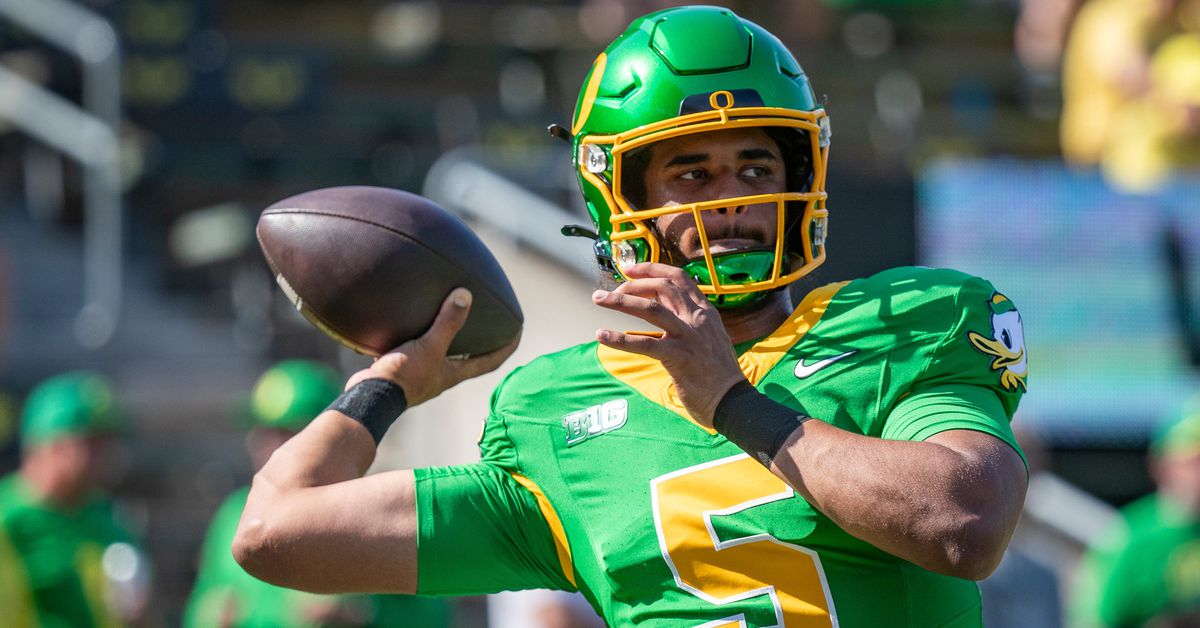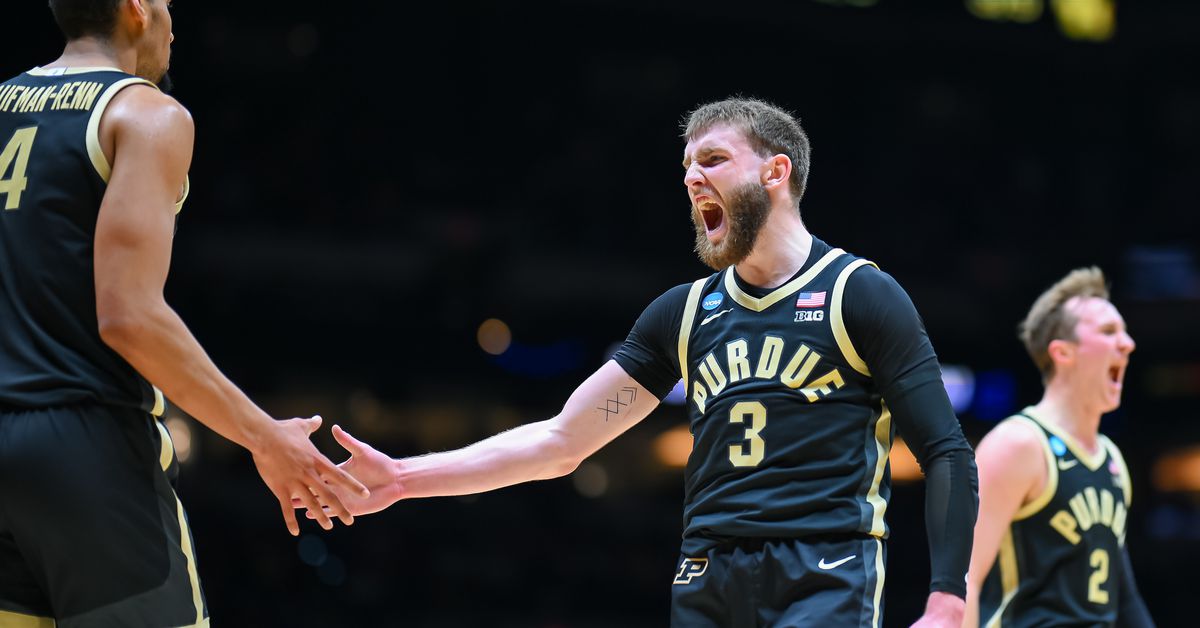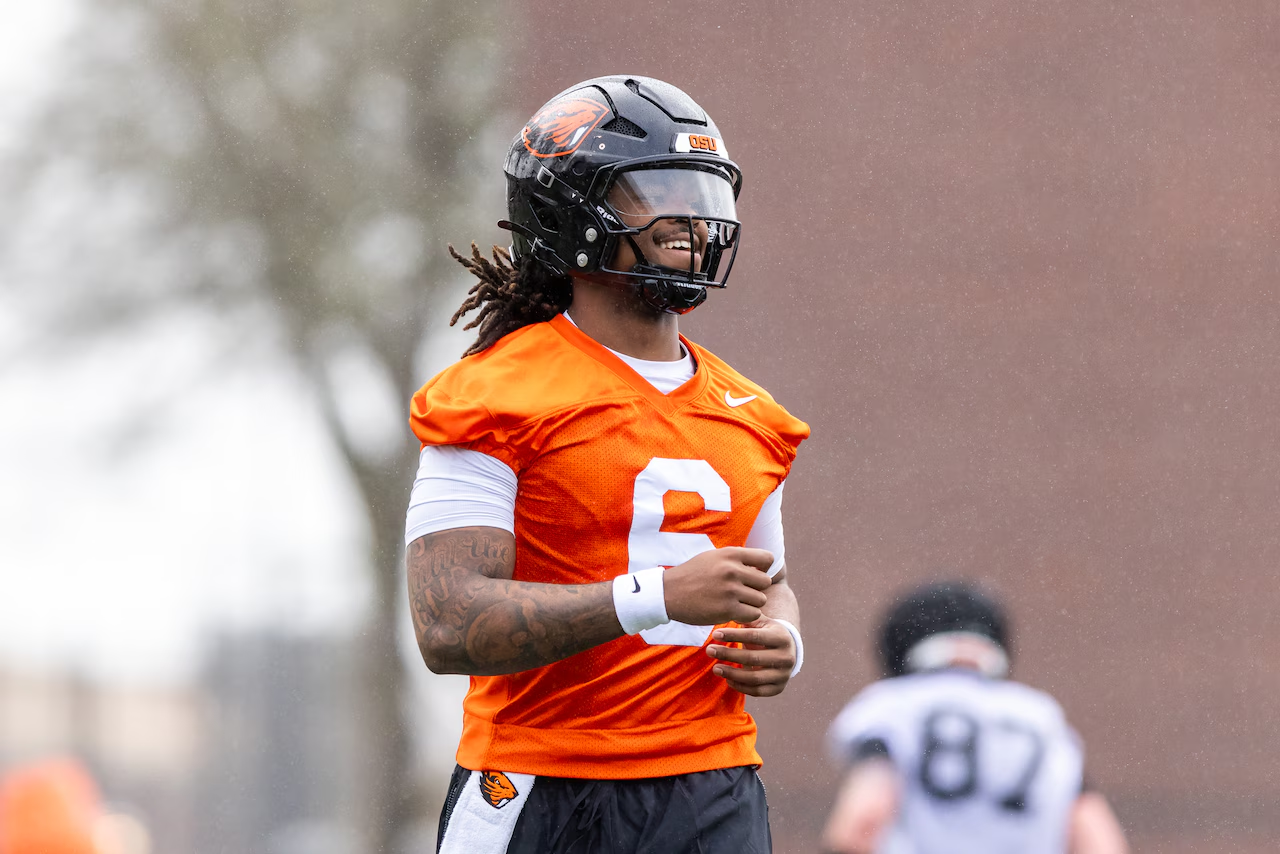Oregon Ducks Football: Air Yards Per Attempt Analysis 2024-2025
It is almost August and football season is right around the corner. With fall camp about to begin I wanted to take a look back at the 2025 question to investigate a frequent criticism of OC Will Stein: that he does not stretch the field with the downfield passing game enough.
It is useless hyperbole to say the Ducks “never throw deep” under Stein. There did seem to be games during the film review I did last year, at Wisconsin and the Rose Bowl specifically, when the offense seemed to be reluctant to try to go over the top. In this article, I will go over the number to see if that impression has any validity.
I first broke down play choice and efficiency for the 2024-2025 offense by down and distance, along with the efficiency of various play types in each scenario. There is a significant amount of historical data that hythloday has compiled showing that on 2nd and 3rd downs play calling significantly changes when the offense has more than 3 yards to go, and again with more than seven yards to go. As such, I split 2nd and 3rd down plays into short (3 or fewer yards to go), medium (7 or fewer yards to go), and long (15 or fewer yards to go). Plays with more than fifteen yards to go are exceptional and hythloday has found they skew the analysis, so such plays were removed.
I did run numbers for fourth downs as well, but even over a full season I ended up with very small sample sizes. Combined with different dynamics on fourth down play calling, I did not include this as part of the analysis. First downs also have different dynamics, so after discussion with hythloday I decided to only include 1st down plays with between 8 and 12 yards to go. As usual, only non-trick plays during meaningful play are included. I’ve separated out rush plays, all passing plays, and drop back passing plays only (i.e. not screen passes).
With all the preamble out of the way, here are the results for efficiency.
:no_upscale()/cdn.vox-cdn.com/uploads/chorus_asset/file/26074038/Oregon_Offense_by_Down_and_Distance.png)
Already there are some interesting trends visible, but lets combine them with the bigger picture. To investigate this further, I isolated only drop back passing plays (no screens) and found the explosive rate (passing plays 15 yards or more), as well as both yards per play (excluding sacks, scrambles, and throwaways), and yards per completion. I have charted the results below.
:no_upscale()/cdn.vox-cdn.com/uploads/chorus_asset/file/26074067/Drop_Back_Passing_Offensive_Production_2024_2025.png)
That’s a lot of numbers on a lot of bars, but what can we discern? A lot of the play calling we saw from Oregon in 2025 was very close to a typical FBS offense, though the Ducks were far above average in efficiency and production in all categories. There were a couple of discrepancies though.
The first thing that jumped out to me was that despite both hythloday and I bemoaning how the offense was calling an above FBS average number of screen passes when their production on these plays was below average, there was one situation where including screen passes increased efficiency over drop back passing: second and medium. With hindsight, Stein should have saved his screen passes for this situation and called screens in other situations rarely if ever.
Second down is also where the one irrational trend I was able to identify shows up, and it does match Stein’s reputation of being “gun shy.” Based on hythloday’s historical data, the FBS median for passing on second and short is around 30% with a 55% success rate, while Big Ten offenses generally only pass about 25% of the time with similar success rates in this situation. Last season Oregon was more than 10% more efficient than a typical FBS offense passing on second down, but only threw the ball in this situation at a comparable rate to plodding Big Ten teams.
This is even less defensible since Oregon was so good at picking up conversions on third and short. Moreover, when the Ducks did throw on 2nd and short they were at their most explosive. It’s very perplexing since Lanning and Stein have frequently been willing to go for it on 4th and short once near midfield, meaning once in decent field position the offense could count on two plays to convert short yardage even if the “shot” play was incomplete.
I want to finish on a high note, so I will point out that while I have criticisms about second and short, third and medium play calling was excellent. Oregon dropped back to throw in this situation about 85% of the time as opposed to 80% for the Big Ten or wider FBS, but were far more successful at over 60% compared to 40% for typical FBS and Big Ten teams. When Oregon did run on third and medium, they made it count with a superb 85% efficiency, leaving the 40% FBS and 35% Big Ten benchmarks in the dust. This shows a strong ability by Stein to choose opportune moments to break tendency.
With a new QB, new starting receivers, and 4 out of five new starters on the offensive line, there will doubtless be differences in efficiency in various situations this upcoming season. With young athletes out wide and strong armed quarterbacks on the roster, I’d still like to see some more deep balls on second and short. Just make sure to keep that toss play into the boundary ready to go on third and medium!
Share this content:















Post Comment